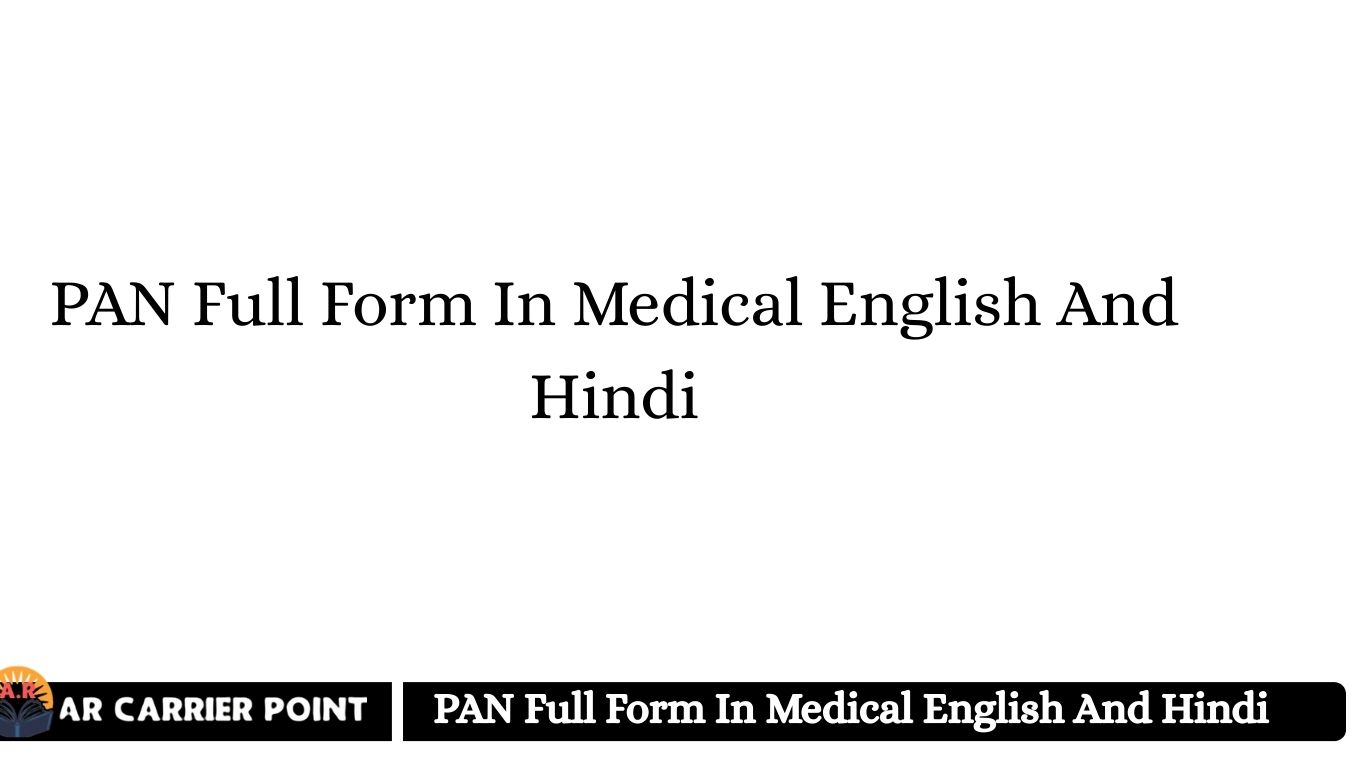PAN Full Form In Medical English
In medical terminology, PAN stands for Polyarteritis Nodosa. It is a rare but serious condition characterized by inflammation of the small and medium-sized arteries, which can lead to organ damage if left untreated. Polyarteritis Nodosa affects multiple organs in the body, including the kidneys, heart, liver, and nervous system. Early diagnosis and proper management are crucial to prevent severe complications. PAN can manifest with symptoms such as fever, fatigue, muscle and joint pain, skin rashes, and high blood pressure. Treatment often involves medications that suppress the immune system, like corticosteroids or immunosuppressive drugs, to control inflammation and reduce damage to affected organs.
PAN Full Form In Medical Hindi
चिकित्सा में PAN का पूरा नाम पॉलीआर्टराइटिस नोदोसा है। यह एक दुर्लभ लेकिन गंभीर स्थिति है, जिसमें शरीर की छोटी और मध्यम आकार की धमनियों में सूजन हो जाती है। इससे अंगों को नुकसान पहुँच सकता है यदि समय पर इलाज न किया जाए। पॉलीआर्टराइटिस नोदोसा कई अंगों को प्रभावित कर सकता है, जैसे किडनी, हृदय, जिगर और तंत्रिका तंत्र। इसके लक्षणों में बुखार, थकान, मांसपेशियों और जोड़ों में दर्द, त्वचा पर दाने और उच्च रक्तचाप शामिल हो सकते हैं। इस रोग का उपचार आमतौर पर इम्यून सिस्टम को दबाने वाली दवाओं जैसे कोर्टिकोस्टेरॉइड्स या इम्यूनोसप्रेसिव दवाओं के माध्यम से किया जाता है, ताकि सूजन को नियंत्रित किया जा सके और अंगों को होने वाले नुकसान को रोका जा सके।
Read More: C C E Full Form In English And Hindi
Frequently Asked Questions
What does PAN stand for in medical terms?
PAN stands for Polyarteritis Nodosa, a rare condition causing inflammation of small and medium-sized arteries.
What are the common symptoms of PAN?
Symptoms may include fever, fatigue, muscle and joint pain, skin rashes, high blood pressure, and organ-specific issues depending on which arteries are affected.
Which organs are commonly affected by PAN?
PAN can affect multiple organs, including the kidneys, heart, liver, and nervous system.
How is PAN diagnosed?
Diagnosis usually involves blood tests, imaging studies, and sometimes a biopsy of affected tissues to confirm inflammation in arteries.
What treatments are available for PAN?
Treatment typically includes corticosteroids and immunosuppressive drugs to reduce inflammation and prevent organ damage.
Is PAN a life-threatening condition?
If left untreated, PAN can be serious and potentially life-threatening, but early diagnosis and proper treatment improve outcomes significantly.
Conclusion
Polyarteritis Nodosa is a rare but serious disease affecting arteries and multiple organs. Early diagnosis and proper treatment are essential to control inflammation, prevent complications, and improve patient outcomes. Awareness of symptoms and timely medical care play a vital role in managing this condition effectively.


